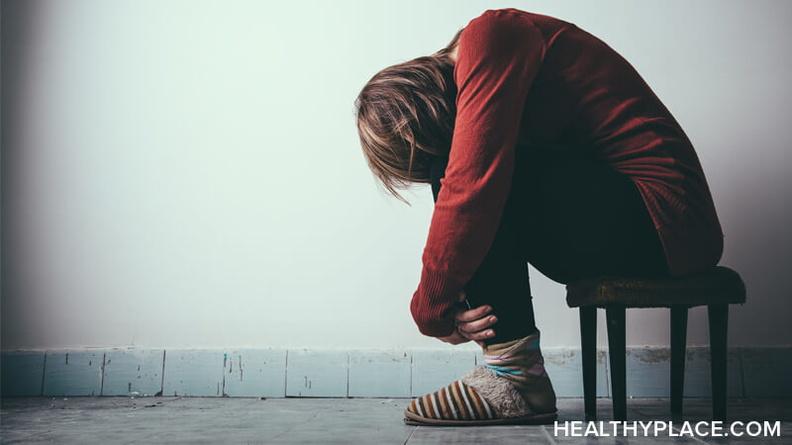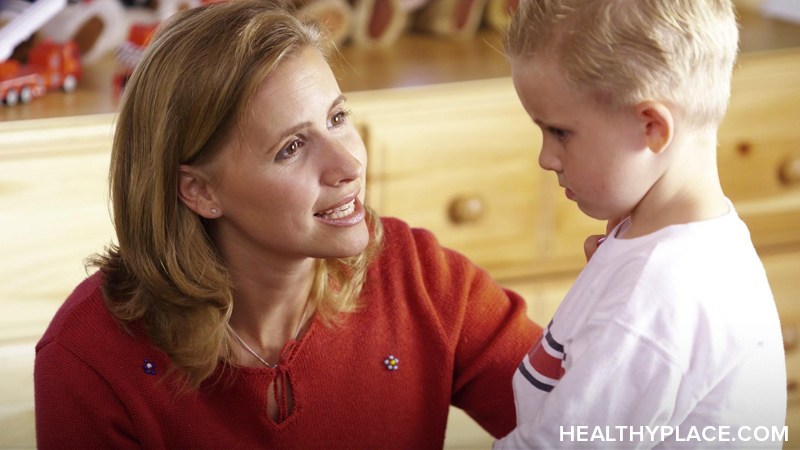
Written for prospective and adoptive parents, this fact sheet describes the effects of sexual abuse and provides recommendations for caring for sexually abused children. Topics covered include the physical and behavioral signs of abuse, issues for boys, contributors to juvenile sex offending, and typical reactions to abuse. Bonding in the adoptive family also is discussed. The fact sheet provides a list of recommended publications for parents and professionals.
Table of Contents
- Parenting the Sexually Abused Child
- What is Child Sexual Abuse?
- How Often Does Child Sexual Abuse Occur?
- What Behaviors or Signs Might You See in a Child Who has been Sexually Abused?
- Are All Children Affected Equally by Child Sexual Abuse?
- Do Boys Who Are Abused have Special Issues?
- What About Juvenile Sex Offenders?
- What Do Parents Need to Know When Adopting a Child Who has Experienced Sexual Abuse?
- Will Our Child Need Professional Help?
- Is the Healing Ever Completed?
1. Parenting the Sexually Abused Child
As a prospective adoptive parent, you may have some valid concerns about sexual abuse. You may wonder what the special needs are of children who have been sexually abused and whether you will be able to meet those needs. By acquiring more knowledge, you will feel more confident in taking on the challenges and rewards of adopting a child with special needs.
Many parents who have already adopted sexually abused children feel that their greatest obstacle was lack of information about sexual abuse in general; about their particular child's history; and about helpful resources such as support groups, skilled therapists and sensitive reading materials. This article will provide you with some basic information about child sexual abuse as well as some special considerations for parents who adopt these children.
2. What Is Child Sexual Abuse?
Child sexual abuse is any forced or tricked sexual contact by an adult or older child with a child. Usually, the adult or older child is in a position of power or authority over the child. Physical force is generally not used since there is usually a trusting relationship between the adult or older child and the child who is abused.
There are various types of sexual activity which may take place. It can include open mouth kissing, touching, fondling, manipulation of the genitals, anus or breasts with fingers, lips, tongue or with an object. It may include intercourse. Children may not have been touched themselves but may have been forced to perform sexual acts on an adult or older child. Sometimes children are forced or tricked into disrobing for photography or are made to have sexual contact with other children while adults watch.
Child sexual abuse does not always involve physical touching. It can include any experience or attitude imposed on a child that gets in the way of the development of healthy sexual responses or behaviors. For example, a child may be a victim of "emotional incest." If a mother tells her son, in great detail, about her sexual exploits, or if a father promises his daughter that she will be his life partner when she turns 18, these would be scenarios in which the child could be considered sexually abused. Siblings who are aware of a brother or sister's victimization, but are not actually abused themselves, may also suffer many of the same effects as an abused child.
In addition, some children experience ritualistic and/or satanic abuse. Ken Wooden, the founder of the National Coalition for Children's Justice, defines ritualistic abuse as a bizarre, systematic continuing abuse which is mentally, physically, and sexually abusive of children, and for the purpose of implanting evil.
3. How Often Does Child Sexual Abuse Occur?
Estimates are that approximately 1 in 4 girls and 1 in 8 boys experience sexual abuse in some way before they are 18. Data on how many of these children live in foster or adoptive homes are not available. Foster care and adoption social workers are now saying they believe the percentages of boys and girls in foster care who have been sexually abused are much higher than in the general population, perhaps as high as 75%. Many came into foster care initially because of sexual abuse and others are children who were re-victimized while in foster care, either by an older foster child or by an adult.
4. What Behaviors or Signs Might You See in a Child Who Has Been Sexually Abused?
While no one sign or behavior can be considered absolute proof that sexual abuse has occurred, you should consider the possibility of sexual abuse when one or several of these signs or behaviors are present.
Physical Signs
- Scratches, bruises, itching, rashes, cuts or injuries, especially in the genital area
- Venereal disease
- Pregnancy in (young) adolescents
- Blood or discharge in bedding or clothes, especially underwear
Behavioral Signs
- Aggressive behavior towards younger children
- Advanced sexual knowledge for the child's age
- Seductive or "sexy" behavior towards adults or peers
- Pseudo-mature behavior (for instance, a girl who is eight and dresses like a 16-year-old, wears makeup and generally acts "too old for her age," or a young boy who attempts to be his mother's "man" in every sense of the word)
- Regressed behavior (for example, the child who has been toilet trained starts wetting the bed)
- Excessive masturbation, masturbation in public places, difficulty with being re-focused to another behavior
- Poor relationships with peers
- Fear of a particular person, place or thing (for example, if the abuse occurred in the bathroom, the child may show fear in that room)
- Sudden or extreme changes in behavior (for instance, a previously good student starts having trouble with school work, a child who was not sad before starts crying frequently or acting sad, or a formerly cooperative child acts defiantly or is uncooperative or unusually overly cooperative)
- Eating disorders (overeats, undereats)
Additional Behavioral Signs in Pre-teens and Adolescents
- Self-mutilation (the child may repeatedly pick at scabs, cut him/herself with a razor blade, bite his/her finger or arm, burn him/herself with a cigarette)
- Threatening or attempting suicide
- Using drugs or alcohol
- Becoming promiscuous (a child is sexually active without discrimination, or just has that reputation)
- Being prudish (the child avoids any sexuality, does not see him/herself as a sexual being in any way)
- Prostitution
- Fire-setting
- Lying, stealing
- Running away
- Isolating self or dropping friends
- Pre-occupation with death (the child may write poems about death, may ask a lot of questions about death, such as "What does it feel like and where do people go?")
Some Additional Behavioral Signs in Children Who Have Been Ritualistically/Satanically Abused
- Bizarre nightmares
- Sadistic play (for example, mutilation of dolls or small animals)
- Self-mutilation
- Pre-occupation with death
- Increased agitation on certain dates which represent satanic high holy days
- A constant fear of harm and extreme fear of being alone
5. Are All Children Affected Equally by Child Sexual Abuse?
There is a myth that all children who have been sexually abused are "damaged goods" and that the damage is for life. In fact, with guidance and support a child who has experienced sexual abuse can certainly recover and go on to live a happy, successful life with loving and trusting relationships. However, there are many factors which influence the extent of the child's trauma and subsequent healing process. Some of these are:
The age of the child when the abuse began. Children abused very early in life may carry body or sensory memories of the abuse but will not have the words to express their rage. One adult survivor of sexual abuse figured out, with the help of therapy, that the reason she became sexually stimulated when she heard and felt a room fan was because a fan had always been on when she was molested as a child. Children who are abused pre-pubescently, during the time when their sexuality is emerging, may carry greater effects of the abuse.
The relationship of the primary perpetrator to the child. A child's trust of his/her primary caretaker is central to their relationship. Therefore, when abuse occurs in this context, the betrayal is intensified.
How long the abuse occurred. The longer the abuse occurred, the more likely the victim is to feel that he/she should have been able to stop it and thus he or she feels more "guilty."
Whether there was violence involved. In most cases where the abuse included violence or potential violence (that is, the victim was made to understand that without cooperation there would be violence) the child will have experienced additional trauma and therefore damage to his/her development
The social system available to the child at the time of abuse. The child who had someone to tell about the abuse will suffer less than the child who had no one to tell. And even in some cases where the support system is available, the child may choose not to tell for fear of the consequences. For example, the child may think, "If I tell my father that my brother is abusing me and he believes me, then my father may do something drastic like hurt my brother or send me to jail."
When children reveal their secrets, the response of adults will vary. It is important to stay as calm as possible so as not to further traumatize the child. The rage you may feel is natural, but the child may perceive that it is directed at him or her. The child needs a safe, supportive atmosphere in which to talk. Children also benefit enormously from hearing that this has happened to other children, male and female.
Ego development of the child at the time of the abuse. If the child has a firmly established concept of his or her sexual identity, the abuse will have less impact. Children who are abused by a same sex perpetrator often have deeply felt fears about whether this means they are homosexual. One way in which parents can help allay this fear is to explain that our bodies have many nerve endings. If these nerve endings are stimulated, they will react. For example, if a bright light hits your eyes, your first response will be to blink or to shade them from the light. A simple concept to use with children is that of tickling. If a child is ticklish, he or she will laugh when tickled. It does not matter whether the person tickling is male or female; the child is reacting to the experience.
If the perpetrator is of the opposite sex, questions of identity may also come into play. For example a boy who is abused by a woman and is not aroused, may doubt his masculinity. If he is aroused physically, but not emotionally, he may equally doubt his masculinity. The same identity issues for girls may hold true.
If the child has a positive self-concept, that is, if he or she feels valued at the time the abuse occurred, there will be fewer repercussions. In fact, children with good self-esteem are more likely to feel they can say no and/or tell someone about the abuse.
6. Do Boys Who Are Abused Have Special Issues?
Boys who are sexually abused face some additional problems because of persistent myths in our society. Males are rarely viewed as fitting the victim role. When boys get hurt, they are often told "act like a man," "don't be a sissy," "control your emotions." The message to boys is to stand on their own two feet and to take care of themselves. Under these circumstances, a male victim is less likely to tell and therefore cannot begin a healing process. This increases the chances that he may take on the role of the victimizer in an attempt to master his own experience.
A further complication for boys is that the media portray boys who have sexual experiences with older women as going through a "rite of passage" rather than as victims of sexual exploitation. Movies such as "Summer of '42" and "Get Out Your Handkerchiefs" are prime examples of this.
7. What About Juvenile Sex Offenders?
Some children who have been sexually abused go on to abuse other children. While this is a serious problem, the exact percentage of sexual abuse victims who become abusers is not known.
It is important to realize that these children are victims as well as offenders and need to receive counseling from qualified therapists who understand both aspects of the problem. The therapist must be able to be empathic and understanding of the "victim" but confrontational with the "victimizer."
Victimizers have triggers that precede their behavior. For example, a child may abuse another child when he or she finds him or herself in a vulnerable or stressful situation. Sometimes this is because he or she lacks control or power. This may be when the child gets called a name at school or believes he or she is being punished unfairly. The therapist must help the child to not only recognize his/her own individual triggers but also, to understand the consequences of acting out these impulses.
In other instances, past experiences have left the child overly sexually stimulated. The child needs education and suggestions of alternative positive behaviors to replace the sexually victimizing behavior.
8. What Do Parents Need to Know When Adopting a Child Who Has Experienced Sexual Abuse?
Parents who adopt children who have experienced sexual abuse need the wisdom of Solomon, the strength of Hercules and the patience of Mother Theresa. If you fall short in any of these areas, do not despair. You are in good company. Perhaps, more important is your desire to help a young person grow into a healthy, trusting adult. This is a privilege and one which brings real satisfaction to those who have adopted.
What Do Parents Need to be Aware of About Themselves?
It is very important for you as prospective adoptive parents to be honest with yourselves and with your adoption worker about a number of things:
Is there a history of sexual abuse in either the mother or father's past? If there is, how were those experiences resolved? Did you decide to "just forget about it" and chalk it up as one of those things that just happened? Or did you get help, from your parents, a teacher, a minister, a therapist or someone who could help you work through your feelings about having been abused? Parents with unresolved abuse experiences in their history may be at greater risk for either abusing the child again, or for keeping too much physical and emotional distance, for fear of abusing the child. Parent/Survivors in local support groups regularly address these phenomena.
How comfortable are you as prospective parents, with your own sexuality and with your sexual relationship(s)? Can you talk comfortably about sex? Do you give yourselves permission to acknowledge your own sexual feelings, thoughts, fantasies and fears? Do you have a well-established relationship which allows for direct and open communication? A child who has been sexually abused may need to talk about what happened to him or her. The child's behavior may be seductive or blatantly sexual at times. A parent must be able to deal with this.
In addition, there are some other issues that are important for adoptive parents to consider. They are:
A willingness to "be different," or experience embarrassing situations, at least for a while. Children who have been sexually abused may behave toward their adoptive parents in ways which are different than non-abused children. For example, Lisa, age 8, began shouting loudly, in public places like the supermarket, that her father had abused her. In fact, it was her biological father and not her adoptive father who had abused her, but the strangers in the supermarket obviously did not make the distinction.
An ability to wait for the child's commitment while not putting off making your own. An abused child is often untrusting and tied to the past. A child may repeatedly test your commitment to him or her. She or he may feel that if you really and truly saw her or him as they are, with all the scars, that you would not really want him or her.
Many parents have the hope that their love will immediately ease the mistrust their child has of the world and all its adults. What one adoptive parent learned was "love has a different meaning for my daughter. To her, it's simply a deal: You do this for me and I'll do that for you. What a shock to discover that love is not enough." A true, trusting love based on more than just bargaining can come to pass with a sexually abused child, but it will take time, consistency and patience.
A sense of humor. As with most situations in life, a good hearty laugh helps.
What Do Parents Need to be Aware of About Their Child Who Has Been Sexually Abused
Children who have experienced sexual abuse will probably need help in learning new behaviors and ways of relating. Some of the behaviors and emotions you may see expressed by your child are:
Withdrawal: Overwhelmed by the feelings she or he has experienced, the child may retreat physically or emotionally. As a parent, you may feel confused or resentful. It can be very isolating to have someone close to you tune you out. Unless you think there is danger of physical harm to the child or others, the best course of action is to reassure the child that you care and that you will provide the limits and boundaries that your child needs.
Mood Swings: A moment's tenderness can quickly explode into anger. The child may be full of confidence one day, only to sink into despair the next. It is difficult to see someone you care about in pain, but you cannot control the feelings of someone else. Point out that these mood swings are occurring. Do not allow yourself to be unfairly blamed. Try to stay calm and accepting that sometimes the child does not even know when or why his/her mood swings are occurring. Crying jags can be part of these mood swings. Accept that it is beyond your power to make it all better. Sometimes when a parent tries to rescue a child from his or her pain, he or she ends up feeling guilty, resentful and frustrated when it does not work. When a caterpillar is emerging from the cocoon, it must have a period of time to build strength in its wings. If the butterfly is released from its cocoon before its time, its strength will be diminished and it will not be able to survive on its own.
Anger: The first target for the child's angry feelings may be the person he or she has come to feel the safest with -- you. When a person's angry feelings are completely out of proportion to what is going on, it probably has nothing to do with the present situation. Something in the present is triggering and re-stimulating old memories and feelings. The safety of the current situation allows these feelings to be expressed. Recognize that this is actually a sign of health, but do not accept unacceptable behavior; and never expose yourself to physical violence.
You can assure your child that you are willing to work out the problem at hand, but in a safe and supportive manner. For example, a child may be offered a pillow to beat on in order to vent his or her anger.
Unreasonable Demands: Some children learn the survival skills of manipulation and control. They may feel entitled to make unreasonable demands for time, money or material goods. It is important not to play into or get trapped by these demands. You need to maintain a healthy relationship with your child. This will help the child reduce these demands.
Sexual Behaviors: Since the abuse was acted out sexually, the child needs help in sorting out the meaning of abuse, sex, love, caring and intimacy. Some children may try to demand sexual activity, while others may lose interest in any form of closeness. Think of all the needs that are met through sex: intimacy, touch, validation, companionship, affection, love, release, nurturance. Children need to be re-taught ways that these needs can be met that are not sexual.
A child who has been sexually abused may feel:
- I am worthless and bad
- No person could care for me without a sexual relationship
- I am "damaged goods" (no one will want me again)
- I must have been responsible for the sexual abuse because
- it sometimes felt good physically
- it went on so long
- I never said "no"
- I really wasn't forced into it
- I never told anyone
- I hate my body
- I am uncomfortable with being touched because it reminds me of the abuse
- I think I was abused but sometimes I think I must have imagined it
- I blame my (biological) mother or father for not protecting me but I can't talk about it; I don't want to hurt him/her
A child who has been sexually abused will benefit from clear guidelines that set the rules both in the home and outside. These kinds of rules will help provide the structure, comfort and security which all children need to grow into healthy adults.
Experts in the field of adoption and child sexual abuse believe these guidelines are particularly important during the first year after placement, when the child is working hard to establish new relationships with his/her adoptive family and to build trust.
The following guidelines address topics with specific reference to children who have been sexually abused.
Privacy: Everyone has a right to privacy. Children should be taught to knock when a door is closed and adults need to role model the same behavior.
Bedrooms and Bathrooms: These two locations are often prime stimuli for children who have been sexually abused, since abuse commonly occurs in these rooms.
By the time children enter first grade, caution should be used about children of the opposite sex sharing bedrooms or bath times.
It is not advisable to bring a child who has been sexually abused into your bed. Cuddling may be overstimulating and misinterpreted. A safer place to cuddle may be the living room couch.
Touching: No one should touch another person without permission. A person's private parts (the area covered by a bathing suit) should not be touched except during a medical examination or, in the case of young children, if they need help with bathing or toileting.
Clothing: It is a good idea for family members to be conscious of what they wear outside of the bedroom. Seeing others in their underclothes or pajamas may be overstimulating to a child who has been sexually abused.
Saying "No": Children need to learn that it is their right to assertively say "no" when someone touches them in a way they do not like. Help them to practice this.
Sex Education: All children, including the child who has been sexually abused, need basic information about how they develop sexually. They also will benefit from an atmosphere in which it is OK to talk about sex. Appropriate words for body parts, such as penis, vagina, breasts and buttocks, will give the child the words to describe what happened to him or her. Suggestive or obscene language is sometimes a trigger for old feelings for a child who was sexually abused, and should not be allowed.
No "Secrets": Make it clear that no secret games, particularly with adults, are allowed. Tell children if an adult suggests such a game, they should tell you immediately.
Being Alone With One Other Person: If your child is behaving seductively, aggressively or in a sexually acting out manner, these are high risk situations. During those times, it is advisable not to put yourself in the vulnerable position of being accused of abuse. In addition, other children may be in jeopardy of being abused. Therefore, whenever possible during these high risk situations, try not to be alone with your child or allow him/her to be alone with only one other child.
Wrestling and Tickling: As common and normal as these childhood behaviors are, they are often tinged with sexual overtones. They can put the weaker child in an overpowered and uncomfortable or humiliating position. Keep tickling and wrestling to a minimum.
Behaviors and Feelings: Help children differentiate between feelings and behaviors. It is normal to have all kinds of feelings, including sexual feelings. However, everyone does not always act on all the feelings he or she has. Everyone has choices about which feelings he or she acts on, and everyone (except very young children) must take responsibility for his or her own behavior.
9. Will Our Child and Family Need Professional Help?
It is very likely that at some time or other parents of a child who was sexually abused will need professional help and support for themselves and their child. The type of therapy that will be the most helpful, that is, individual, couple or family therapy, will depend on a family's particular situation. When a child is being seen in individual therapy, it is important that the parents, who have the primary responsibility for the child, be in close contact with the therapist, or included in the therapy. Try to choose a therapist who is knowledgeable about both sexual abuse and adoption issues and with whom you feel comfortable. If parents are not familiar with the therapy resources in their area, they may want to ask their adoption agency or local mental health center for a referral. There are also some resources listed at the end of this paper which may be helpful with referrals to therapists who are knowledgeable about sexual abuse.
Support groups for adoptive parents or sexually abused children and support groups for victims/survivors are another helpful resource. Adoptive parents who have had a chance to talk with others who understand the experience of parenting a sexually abused child say that this kind of sharing is very useful. Dr. Nicholas Groth, a leading psychologist in the field of sexual abuse, along with many children and adult victims/survivors, say that groups for children can be most effective in the healing process. The opportunity to talk and share with other children who have also experienced sexual abuse reduces a child's sense of isolation and belief that he/she is the only one to whom this has ever happened.
10. Is the Healing Ever Completed?
Recovery from child sexual abuse is an on-going process. As this process unfolds, the child will ideally move from victim to survivor to thriver. Developmental stages, particularly adolescence and young adulthood, may trigger old feelings about the abuse. For example, the time when an adolescent's body begins to develop physically, or when he or she marries, or becomes a parent may restimulate old feelings and memories.
As discussed earlier, so many factors can influence the extent of the damage to the abused child. While adoptive parents cannot erase what happened to their child earlier in his/her life, you have a wonderful opportunity to provide your child with new, healthier experiences. Those who have made the commitment to parenting a sexually abused child say that the rewards of helping a child grow into a healthy, vibrant adult are very satisfying indeed.
This paper was written for Child Welfare Information Gateway by Rosemary Narimanian of Philly Kids Play It Safe and Julie Marks of the National Adoption Center in 1990.
Recommended Readings
For Children
Freeman, Lory. It's My Body. Parenting Press, Inc., Seattle, WA, 1982.
Gil, Eliana. I Told My Secret: A Book for Kids Who Were Abused. Launch Press, California, 1986.
Hindman, Jan. A Very Touching Book...for Little People and for Big People. McClure-Hindman Associates, Durkee, OR, 1985.
Satullo, J. It Happens to Boys Too. RCC Berkshire Press, 1989.
Sweet, Phyllis. Something Happened to Me. Mother Courage Press, Racine, WI, 1981.
Sweet, Phyllis. Alice Doesn't Babysit Anymore. McGovern and Mulbacker, Oregon, 1985.
For Parents and Professionals
Bass, Ellen and Davis, Laura. The Courage to Heal, A Guide for Women Survivors of Child Sexual Abuse. Harper & Row, New York, 1988.
Father Flanagan's Boys Home. Sexually Abused Children in Foster Care. Boys Town, Nebraska. May be ordered by contacting Father Flanagan's Boy's Home, Boys Town Center, Family Based Programs, Boys Town, NE, 68010, 402.498.1310.
Gil, Eliana. Outgrowing the Pain. Launch Press, California, 1983.,
Gil, Eliana. Children Who Molest: A Guide for Parents of Young Sex Offenders. Launch Press, California, 1987.
Lew, Mike. Victims No Longer: Men Recovering From Incest and Other Sexual Child Abuse. Nevraumont Publishing Company, New York, 1988.
Maltz, Wendy and Holman, Beverly. Incest and Sexuality. Lexington Books, Lexington, MA, 1986.
McFadden, Emily Jean. Fostering the Child Who Has Been Sexually Abused. Eastern Michigan University, Ypsilanti, MI, 1986.
McFarlane, Kee and Cunningham, Carolyn. Steps to Healthy Touching: A Treatment Workbook for Kids 5-12 Who Have Problems With Sexually Inappropriate Behavior. Kidsrights, Mount Dora, FL, 1988.
Parents Anonymous of Delaware. All In My Family. Parents Anonymous, DE, 1987.
For Professionals
Burgess, Ann; Hartman, Carol; McCormick, Arlene; and Janus, Mark David. Adolescent Runaways, Causes and Consequences. Lexington Books, Lexington, MA, 1987.
Finkelhur, David. Child Sexual Abuse, New Theory & Research. The Free Press, New York, 1984.
James, Beverly. Treating Traumatized Children. Lexington Books, Lexington, MA, 1989.
James, Beverly and Nasjleti, Maria. Treating Sexually Abused Children and Their Families. Consulting Psychologists Press, Inc., Palo Alto, CA, 1983.
MacFarlane, Kee and Waterman, Jill. Sexual Abuse of Young Children. The Guildford Press, New York, 1986.
Sgroi, Suzanne. Handbook of Clinical Intervention in Child Sexual Abuse. Lexington Books, Lexington, MA, 1988.
Other Resources
The National Resource Center on Child Sexual Abuse provides information, resources and technical assistance to organizations and professionals on child sexual abuse. It publishes the "Round Table" Magazine and offers training for professionals. It also maintains lists of treatment programs for victims in various parts of the country. Write to the Center at 106 Lincoln Street, Huntsville, AL 35801, or call 205.533.KIDS (533.5437).
Child Welfare Information Gateway collects and disseminates information on child sexual abuse. It will do research upon request on a particular subject at a very low cost. It also has general publications which you can request. Write to Information Gateway at Child Welfare Information Gateway, Children's Bureau/ACYF, 1250 Maryland Avenue, SW, Eighth Floor, Washington DC 20024 or call at 800.394.3366. Website: http://www.childwelfare.gov/
Child Welfare Information Gateway maintains a list of adoption experts who have expertise in many areas of adoption, including the adoption of children who have experienced sexual abuse.
The C. Henry Kempe National Center for the Prevention and Treatment of Child Abuse and Neglect provides training, consultation, research and program development on all forms of abuse and neglect. Write to the Center at 1205 Oneida Street, Denver, CO 80220, or call at 303.321.3963.
The National Adolescent Perpetrator Network is housed at the C. Henry Kempe Center (see above). It can provide professionals and parents with a bibliography on juvenile sex offenders and with referrals to treatment programs for adolescent offenders. It also operates a Perpetration Prevention Project which provides training to professionals and paraprofessionals on "Understanding the Sexual Behavior of Children." Write to the Network at 1205 Oneida Street, Denver, CO 80220, or call at 303.321.3963.
The National Runaway Switchboard is a 24 hour crisis line for runaway youth and children considering running away. The Switchboard offers limited problem solving in a confidential, non-judgmental manner. It also offers a message service and a referral service for youth in need of shelter. Call 1.800.621.4000.
Sources:
- Child Welfare Information Gateway (U.S. Department of Health and Human Services)









